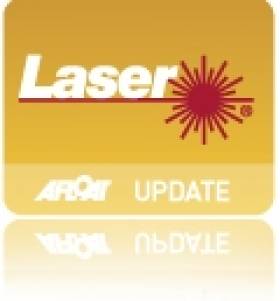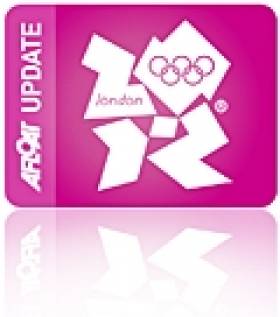Displaying items by tag: Ballyholme YC
Ballyholme Prepares for Belfast Lough Laser Nationals
#laser – Next week will see one of the most competitive sailing events seen in Northern Ireland for several years as the Olympic Laser class hosts its Irish Championships on Belfast lough.
This summer has seen the best Laser Radial sailors from Ireland including many well know faces from Bangor compete across Europe. Séafra Guilfoyle from Cork won the Silver medal at the ISAF Youth World Championships in Portugal where Sarah Eames also competed. Seafra and 6 members from Ballyholme YC also competed at the World Youth Championships in Poland where Seafra came 7th. BYC's Ryan Glynn has just returned from the UK Laser Radial Nationals at Largs, Scotland with 4th place. Brother (and last year's Topper World Champion) Liam Glynn was 5th (2nd Youth), Tim Brow was 7th while Laura Gilmore from SLYC was 1st Youth Lady in a fleet of 86 boats.
Ballyholme Yacht Club will host the Zhik Irish Laser National Championships from 28 - 31st August 2014 - all of the RYANI and ISA youth squads should be in attendance for the Radial championship and a number of the GB squad will also be competing. BYC has one of the largest Laser fleets in Ireland with over 50 regularly competing in club racing and their Icebreaker series over the winter. The 2013 Irish Laser Nationals had over 120 entries. Event Organiser Paddy Brow and Race Officer Robin Gray will ensure a great series of racing and socialising off the water.
The Laser is the most popular single handed dinghy in the world and an Olympic dinghy. There are 3 fleets - Standard, Radial and 4.7 - which use the same boat but have different sail sizes for different size and weight of crew. The Standard is a men's Olympic dinghy - James Espey from Ballyholme YC represented Ireland at London 2012 - and the Radial is the female Olympic dinghy - Annalise Murphy from National YC came 4th at the London Olympics. The 4.7 is a major youth pathway dinghy worldwide.
Today (Wednesday 20th) is the last day for Early Entry Discount and Online Registration.
Kinsale's Chaix Wins Irish Laser Masters at Ballyholme
#laser – Thomas Chaix of Kinsale Yacht Club is the overall winner of the Irish Laser Masters Championship held at Ballyholme Yacht Club at the weekend. Second was Chris Boyd who also won the Grand Master division and the final race in 20 knots. Third was Ballyholme local Gareth Flannigan. Full results are downloadable as a jpeg file below.
Irish Laser Masters Championship
1st Thomas Chaix
2. Chris Boyd
3 Gareth Flannigan
4. Nick Walsh
5. David Fletcher
Murphy Heading for Australian Regatta
The National Yacht Club's Annalise Murphy (Laser Radial) travelled to Australia last weekend for the Perth International Regatta http://www.perth2011.com/ which starts on the 16th of this month. The aim is to gain valuable experience at the venue which will host the December 2011 ISAF World Championships and which will be a vital qualifying event for the the 2012 London Olympic games.
Also heading for Perth is the Royal St. George's Ben Lynch in the high speed 49er dinghy.
After Perth, Annalise travels to Melbourne for the season's first ISAF World Cup event which will be run from Sandringham Yacht Club from 12-19th December. Annalise is currently ranked 20th Womens Laser Radial sailor and 1st under 21 in the World and is campaigning full time to represent Ireland in the 2012 London Olympic Games.
Top youth Laser Radial Sailor Ross Vaughan from the Royal North of Ireland YC has gone down as a training partner for Annalise together with her coach Rory Fitzpatrick.
Also taking part in the Perth Regatta are Irish 49er team of Ryan Seaton and Matt Mc Govern (Ballyholme YC) and Ross Hamilton from the RIYC, Dun Laoghaire.

























